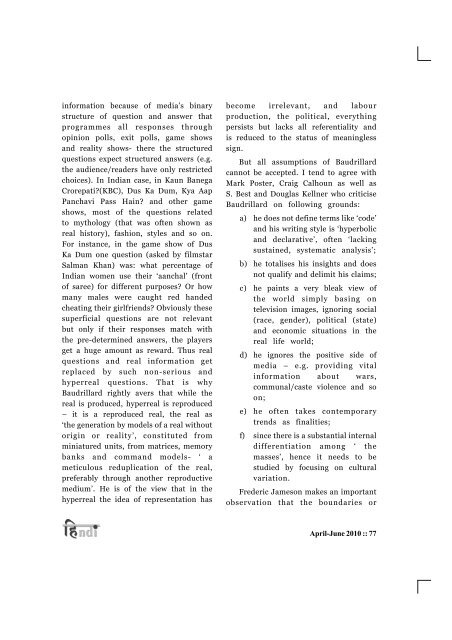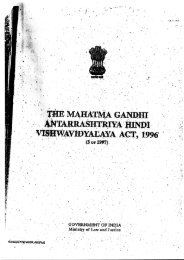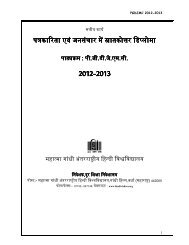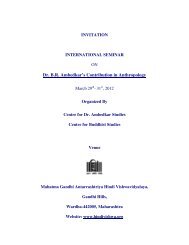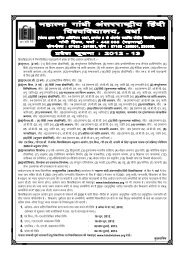Mamta Kalia
Mamta Kalia
Mamta Kalia
Create successful ePaper yourself
Turn your PDF publications into a flip-book with our unique Google optimized e-Paper software.
information because of media’s binary<br />
structure of question and answer that<br />
programmes all responses through<br />
opinion polls, exit polls, game shows<br />
and reality shows- there the structured<br />
questions expect structured answers (e.g.<br />
the audience/readers have only restricted<br />
choices). In Indian case, in Kaun Banega<br />
Crorepati?(KBC), Dus Ka Dum, Kya Aap<br />
Panchavi Pass Hain? and other game<br />
shows, most of the questions related<br />
to mythology (that was often shown as<br />
real history), fashion, styles and so on.<br />
For instance, in the game show of Dus<br />
Ka Dum one question (asked by filmstar<br />
Salman Khan) was: what percentage of<br />
Indian women use their ‘aanchal’ (front<br />
of saree) for different purposes? Or how<br />
many males were caught red handed<br />
cheating their girlfriends? Obviously these<br />
superficial questions are not relevant<br />
but only if their responses match with<br />
the pre-determined answers, the players<br />
get a huge amount as reward. Thus real<br />
questions and real information get<br />
replaced by such non-serious and<br />
hyperreal questions. That is why<br />
Baudrillard rightly avers that while the<br />
real is produced, hyperreal is reproduced<br />
– it is a reproduced real, the real as<br />
‘the generation by models of a real without<br />
origin or reality’, constituted from<br />
miniatured units, from matrices, memory<br />
banks and command models- ‘ a<br />
meticulous reduplication of the real,<br />
preferably through another reproductive<br />
medium’. He is of the view that in the<br />
hyperreal the idea of representation has<br />
become irrelevant, and labour<br />
production, the political, everything<br />
persists but lacks all referentiality and<br />
is reduced to the status of meaningless<br />
sign.<br />
But all assumptions of Baudrillard<br />
cannot be accepted. I tend to agree with<br />
Mark Poster, Craig Calhoun as well as<br />
S. Best and Douglas Kellner who criticise<br />
Baudrillard on following grounds:<br />
a) he does not define terms like ‘code’<br />
and his writing style is ‘hyperbolic<br />
and declarative’, often ‘lacking<br />
sustained, systematic analysis’;<br />
b) he totalises his insights and does<br />
not qualify and delimit his claims;<br />
c) he paints a very bleak view of<br />
the world simply basing on<br />
television images, ignoring social<br />
(race, gender), political (state)<br />
and economic situations in the<br />
real life world;<br />
d) he ignores the positive side of<br />
media – e.g. providing vital<br />
information about wars,<br />
communal/caste violence and so<br />
on;<br />
e) he often takes contemporary<br />
trends as finalities;<br />
f) since there is a substantial internal<br />
differentiation among ‘ the<br />
masses’, hence it needs to be<br />
studied by focusing on cultural<br />
variation.<br />
Frederic Jameson makes an important<br />
observation that the boundaries or<br />
April-June 2010 :: 77


